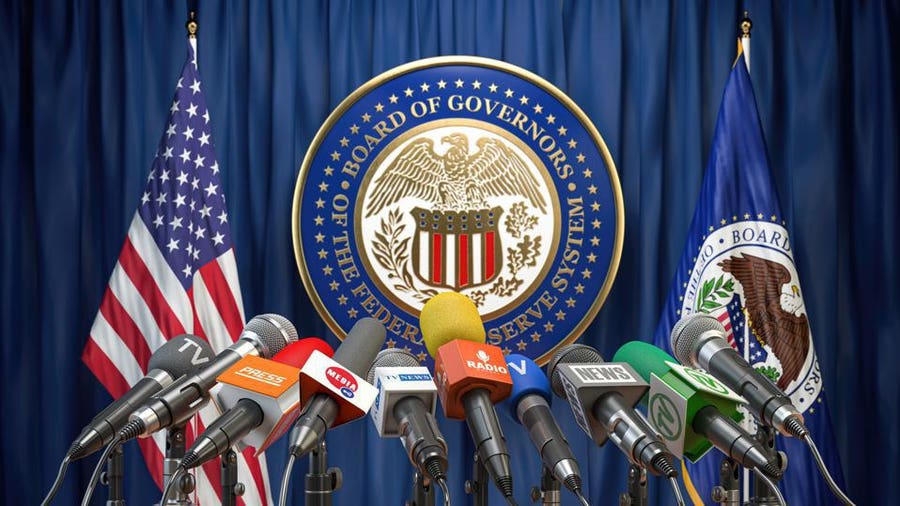At its Federal Open Market Committee (FOMC) meeting on July 30, 2025, the US Federal Reserve (Fed) held its policy rate steady for the fifth consecutive meeting in line with expectations, leaving the policy rate in the range of 4.25-4.50%. The decision was passed by a vote of 9 to 2, and two members voted in favor of the interest rate cut. This development shows that despite the slowdown in inflation, the Fed is maintaining a cautious stance due to uncertainties in the economy and rising tariff risks.
Inflation Slightly Above 2% Target
The resolution stressed that inflation has slowed markedly from its 2022 peak but is still slightly above the long-term target of 2%. It was noted that while inflation in services is gradually falling, price increases in goods continue to exert pressure in the short term. It was reported that fluctuations in net exports and a slowdown in consumer spending offset the pace of growth.
The Fed also said that the unemployment rate remains at low levels and that the labor market remains robust. This shows that employment is resilient despite the tight monetary policy.
Inflation and Growth Messages from Powell
Fed Chairman Jerome Powell, who held a press conference after the meeting, said inflation was still slightly above the Fed's long-term target, noting:
“Inflation has slowed considerably after the peaks we saw in 2022 but is still slightly above our 2% target. There is a gradual decline in service inflation. However, recently increased tariffs have begun to push up the prices of some goods, and short-term inflation expectations have been affected by these developments.”
Powell also noted that economic activity showed moderate growth in the first half of the year, with growth largely supported by consumer spending. He noted that there was a partial recovery in real wages, with wage increases running above inflation.
Tariffs and Geopolitical Risks Stand Out
Pointing to the impact of rising tariffs, Powell said this puts pressure on prices, but the ultimate effects are uncertain:
“Tariffs are now more clearly reflected in the prices of some goods. Some of this cost will be borne by consumers and some by retailers and businesses. But the overall extent of this impact on economic activity and inflation remains unclear.”
Powell stressed that tensions in global trade and shifts in the U.S. foreign trade balance also increase uncertainty about the economic outlook. He also noted that the current stance of the Fed provides protection against inflation risks, while also offering flexibility against possible risks on the employment side.
September decision will depend on data
Asked in September about a rate cut or maintaining current levels, Powell replied:
“We haven't made any decisions about September. We do not disclose such decisions in advance. We will act on the basis of the data and economic outlook that we will have until that meeting.”
Powell also described the current level of the policy rate as “moderately restrictive” and said that this level did not unduly depress the economy. He also stressed that the current monetary policy stance is appropriate to be able to respond quickly to possible economic developments if necessary.
US Economy Exceeds Expectations
Data released on the day of the meeting showed that the US economy grew by 3% on an annualized basis in the second quarter of 2025. In growth, a decrease in imports and an increase in consumer spending were decisive, while some slowdown in investments and exports was observed. In the labor market, private sector employment increased by 104,000 in July, exceeding expectations.
Markets Watch Fed's Cautious Stance
The Fed's cautious messages are being closely followed by markets. Powell's remarks revealed that the possibility of an interest rate cut, depending on the course of the data at the September meeting, was still on the table, but not finalized. Investors are now waiting for non-farm employment, inflation and consumer spending data to be released in the coming weeks.
⚖️ Yasal Uyarı:Bu içerik yatırım tavsiyesi niteliği taşımaz. Yatırımlarınızla ilgili kararlarınızı kendi araştırmalarınız ve risk profilinize göre almanız önerilir.
Fed rate decision, Jerome Powell statements, US economy growth, inflation target 2%, interest rate cut outlook, FOMC meeting, US unemployment rate, US second quarter growth data, US non-farm employment, US markets




















.png)